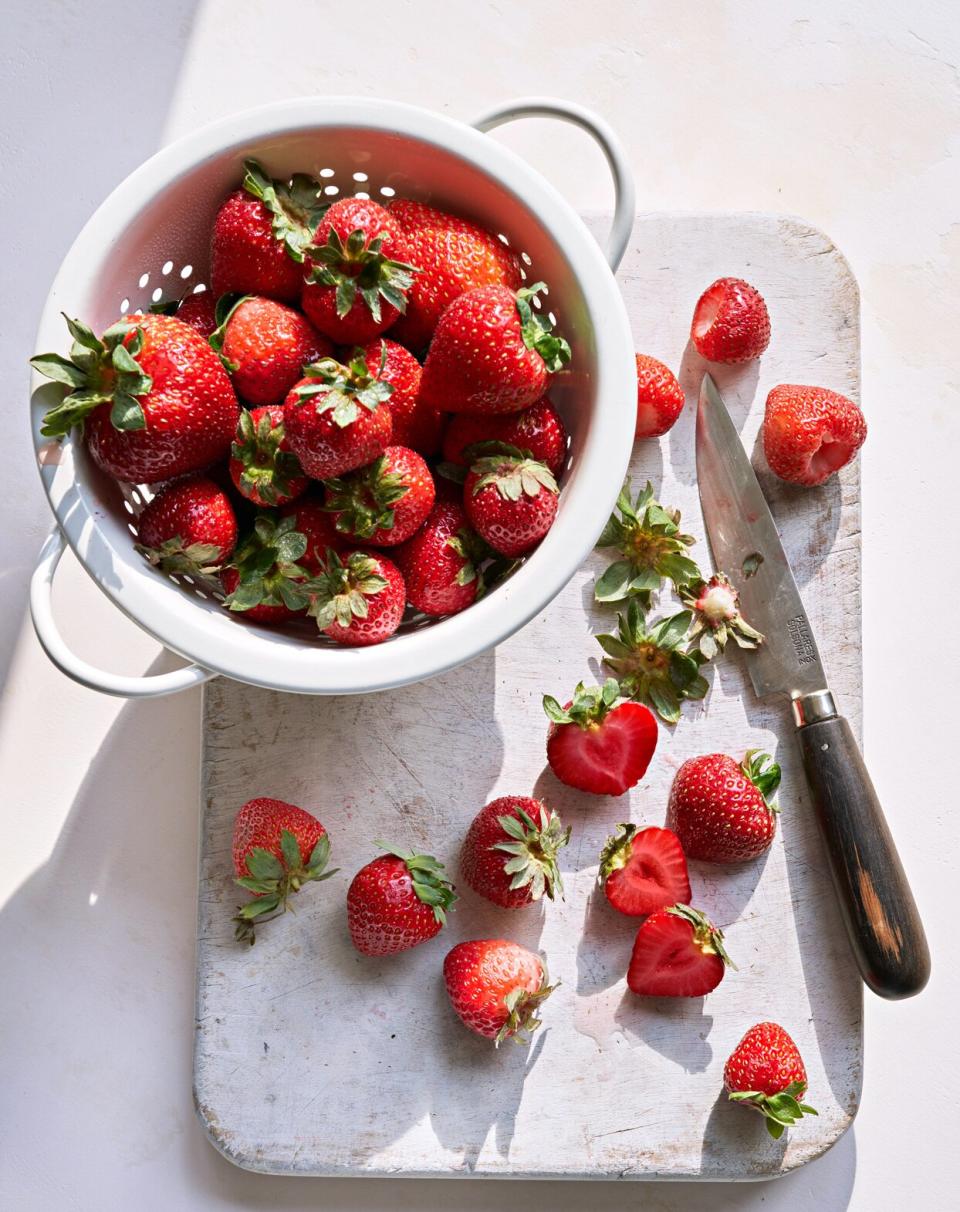These Are the Health Benefits Associated with Eating Strawberries
Known for their sweet flavor and bright red hue, strawberries are some of the most versatile fruits at the market. The plants are also easy to care for, should you decide to grow them at home. And while the juicy berries are usually associated with summer, peak strawberry season depends on the region and variety. Still, we can't help but add strawberry recipes to our weekly rotation, especially during the warmer months.
But before we get into eating them, we wanted to first share a bit of plant science: Botanically, strawberries are not true berries. Yes, really! Berries consist of seeds surrounded by a fleshy layer, followed by an outer skin. (Think: blueberries, grapes, tomatoes, and bananas.) Instead, strawberries are actually "aggregate fruits," meaning they grow many tiny fruits. In a strawberry, these little fruits are the specks we know as seeds, each of which has an actual seed inside it. As for the red fleshy part we call the "berry"? That's actually a swollen part of the stem.
Despite their true identity, strawberries are enjoyed like other berries—and they're just as healthy, too. Read on to learn how the succulent fruit can boost your health, along with our favorite ways to use them in recipes.
Related: Our Sweet Guide to Summers Best Fruits

Con Poulos
What Are the Nutritional Benefits of Strawberries?
According to nutrition info from the USDA, one cup of sliced strawberries contains just 53 calories, plus nutrients like calcium, magnesium, folate, and vitamin A. It holds nearly 98 milligrams of vitamin C, which is more than the amount found in one orange, as well as the recommended daily intake for adults. Strawberries are also rich in antioxidants, or molecules that neutralize potentially harmful molecules called free radicals. This is noteworthy because free radicals, when present in high amounts, can cause cell damage and increase the risk of chronic conditions like cancer and heart disease. Consuming antioxidant-rich foods (like strawberries) can help prevent this cell damage, ultimately improving longevity and reducing the risk of disease, according to Sandy Younan Brikho, M.D.A., R.D.N., registered dietitian and founder of The Dish on Nutrition,
Strawberries are particularly high in antioxidants called anthocyanins. According to an article in the journal Food & Nutrition Research, anthocyanins can suppress inflammation, regulate blood sugar levels, and support healthy vision. (Anthocyanins also happen to be plant pigments; they're responsible for the blue, purple, and red colors in vegetables and fruits, including strawberries.)
Like most plant foods, strawberries offer fiber—one cup of sliced strawberries holds three grams. And though it might not seem like much, most folks fall short of the daily recommended intake of 25 to 38 grams, so every little bit counts. According to Brikho, strawberries have insoluble and fiber, both of which offer nutritional benefits. "Insoluble fiber helps make your stool softer, making it easier to have more regular bowel movements," she explains. On the other hand, soluble fiber can reduce high cholesterol, says Brikho, helping lower your risk of heart disease. "Strawberries are also a good source of potassium," adds Brikho. "Potassium is essential [for] regulating muscle and heart contractions, fluid balance, and the nervous system." It can also help reduce high blood pressure, she notes, further contributing to heart health.
How to Use Them
Botanical definition aside, strawberries are used like other berries: on their own, as a garnish, and in desserts, appetizers, and salads. Add fresh strawberries to your next charcuterie board, or dip them in melted chocolate to make chocolate-covered strawberries. Use sliced strawberries as a topping for scoopable dishes (like oatmeal and yogurt) or breakfast cakes (like waffles and pancakes). Better yet, make our Strawberry Sauce for a delectable condiment that can spruce up even the simplest dish. Meanwhile, in the dessert department, strawberries reign supreme. Try our Almond Custard Tart with Strawberries or Strawberry Napoleons for an aesthetically-pleasing treat. Or cool down with Martha's Strawberry Ice Cream, complete with strawberries macerated in vodka or tequila.
Strawberries are a welcome addition to entrées, too. Our Watercress, Strawberry, and Toasted-Sesame Salad pairs peppery watercress and sweet strawberries for a delightful combo of flavors. Or try Strawberry Salsa, featuring diced red onion and fresh cilantro, for a fruity spin on the classic salsa. Wash it all down with a Strawberry Lemonade or water infused with strawberries, cucumbers, and mint. You can also freeze strawberries to be used for smoothies in place of ice. No matter how you slice it, you truly can't go wrong with the juicy strawberry.

